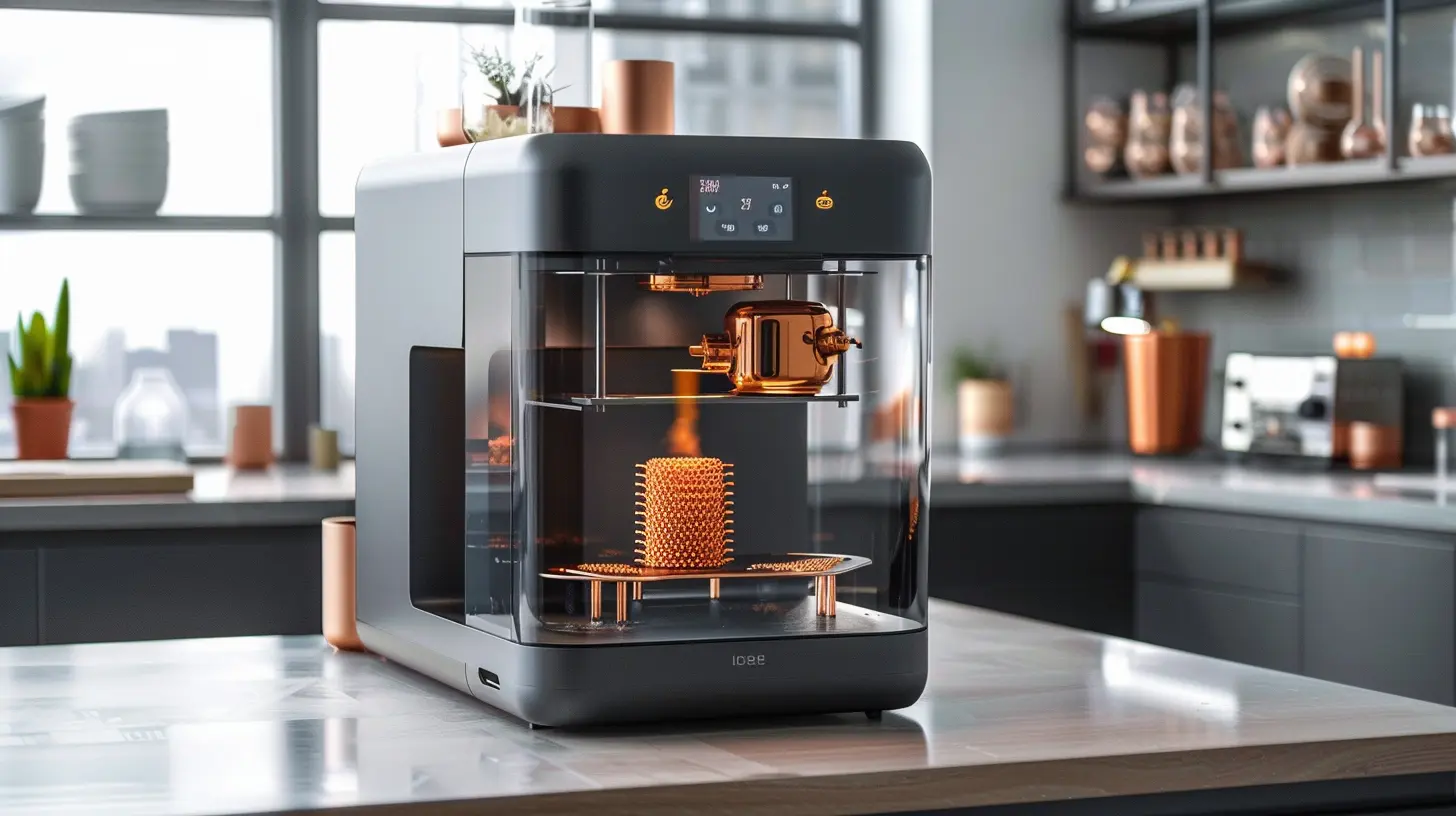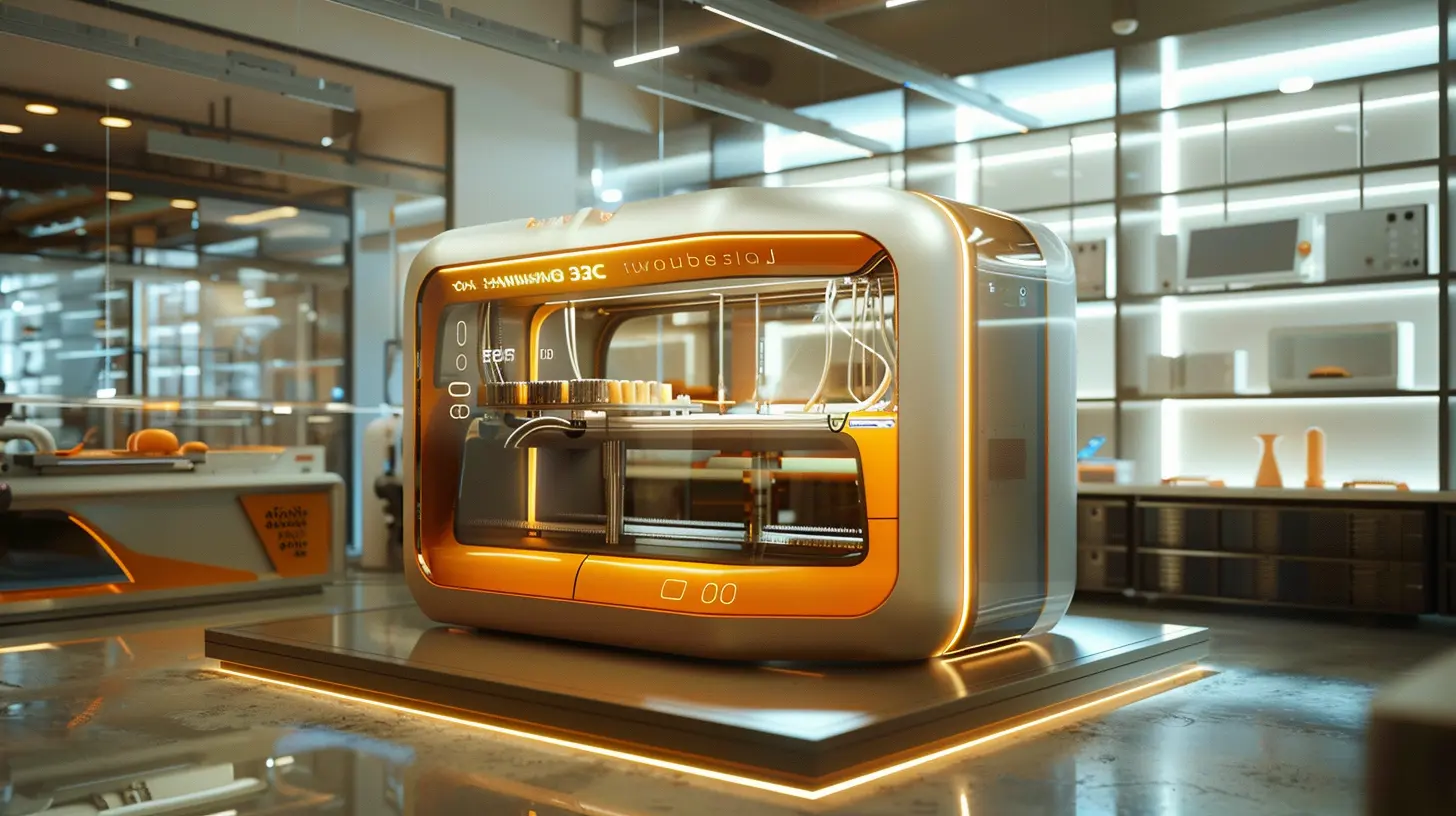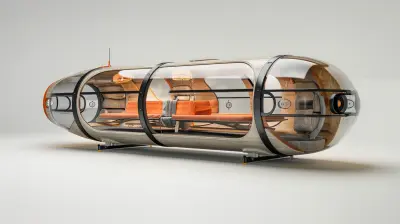How 3D Printing is Shaping the Future of Manufacturing
14 April 2025
3D printing. We've all heard about it, right? It feels like something straight out of a sci-fi movie, but it's very real and rapidly changing the way we create, design, and manufacture products. It's no longer just about printing little plastic toys or quirky household items. Nope. 3D printing, also known as additive manufacturing, is revolutionizing industries across the globe, from aerospace to healthcare.
But what exactly is 3D printing? And how is it shaping the future of manufacturing? Buckle up because we're diving deep into how this cutting-edge technology is shaking things up and what that means for the future of how things are made.

What is 3D Printing?
Before we jump into the juicy details, let's make sure we're all on the same page about what 3D printing actually is. In its simplest form, 3D printing is the process of creating a physical object from a digital model by laying down successive layers of material. Think of it like building a cake, layer by layer, except instead of frosting, you're using materials like plastic, metal, or even concrete.Unlike traditional manufacturing methods, which often involve cutting away material (like sculpting a statue from a block of marble), 3D printing works by adding material. Hence, it's called "additive" manufacturing. This method opens up a whole new realm of possibilities for design and production.
The kicker? This technology allows for a level of customization and complexity that was once thought to be impossible. We’re talking about making things that were once science fiction—prosthetic limbs, car parts, and even entire houses. Yes, you read that right: houses!

The Current State of Manufacturing
Let’s take a step back and look at the manufacturing industry as it stands today. Traditional manufacturing processes, like injection molding, CNC machining, or forging, have been around for decades. They’re efficient, no doubt, but they also come with certain limitations.For one, traditional manufacturing is often expensive, especially when you're dealing with small production runs or customized items. The setup costs for molds or tools can be astronomical. Plus, the need for large quantities to justify the cost makes it challenging for smaller companies or individuals to break into the market.
Another issue? Waste. Traditional manufacturing methods can be wasteful since they often involve cutting away excess material. In an era where sustainability is top of mind, this is a big red flag.
Now, enter 3D printing—a game-changer on multiple fronts.

How 3D Printing is Disrupting Manufacturing
3D printing is flipping the script on traditional manufacturing. Here’s how:1. Customization and Flexibility Like Never Before
One of the most significant advantages of 3D printing is its ability to produce highly customized products. Imagine a world where you can order a pair of shoes designed specifically for your feet. Or, you’re a car enthusiast who needs a specific, discontinued part for your vintage ride—no problem, just print it.Because 3D printing works directly from a digital file, making changes to the design is as simple as clicking a few buttons. This level of flexibility is something traditional manufacturing just can't compete with. It’s not just for consumer goods, either. Industries like healthcare are already benefiting from custom 3D-printed prosthetics and dental implants tailored to individual patients.
2. Reduced Waste and Sustainability
As I mentioned earlier, traditional manufacturing methods can be wasteful. But 3D printing? Not so much. Since the process is additive, you only use the material you need. There’s no excess, no off-cuts, and no waste that ends up in a landfill.This is a massive win for companies looking to reduce their environmental impact. Plus, many 3D printers are now capable of using recycled materials, which brings us one step closer to a more sustainable future. Imagine being able to recycle your old coffee cup into a new product—a future where waste truly becomes a resource.
3. Speed and Efficiency
Time is money, right? Well, 3D printing can drastically reduce the time it takes to go from concept to finished product. In traditional manufacturing, creating a prototype can take weeks or even months. With 3D printing, you can have a working prototype in a matter of hours or days.This speed isn’t just limited to prototypes, either. The technology is advancing so rapidly that large-scale production is now a reality. This opens the door for quicker innovation and faster time-to-market, which is crucial for staying competitive in today’s fast-paced world.
4. Cost-Effective for Low-Volume Production
Here’s the thing: setting up a traditional manufacturing line is expensive. You need molds, tools, machines, and a whole bunch of other equipment. And all of that comes with a hefty price tag. For companies that only need a small production run, this can be a deal-breaker.3D printing, on the other hand, doesn’t require any of that. You can print one item or a thousand with minimal setup costs. This makes it incredibly cost-effective for producing small batches, which levels the playing field for startups and smaller companies looking to compete with the big dogs.
5. Complexity is No Longer a Limit
In traditional manufacturing, the more intricate the design, the more expensive and difficult it becomes to produce. With 3D printing, complexity doesn’t add to the cost. In fact, the technology thrives on complexity. You can create intricate geometries and designs that would be impossible (or insanely expensive) to achieve with traditional methods.This opens up new possibilities for innovation. We’re talking about creating lightweight, yet incredibly strong, structures for industries like aerospace and automotive. Imagine parts that are not only more efficient but also lighter, reducing fuel consumption and costs.
6. On-Demand Manufacturing
Ever heard of the term “just-in-time” manufacturing? It’s the idea that products are made exactly when they’re needed, not before. 3D printing takes this concept to the next level. With 3D printing, you can produce parts on-demand, which means you don’t need to keep a huge inventory of spare parts lying around.This is a game-changer for industries like aerospace, where some parts may only be needed once in a blue moon. Instead of keeping warehouses full of rarely used parts, companies can simply print them as needed, saving both space and money.

Challenges 3D Printing Still Faces
Of course, it’s not all sunshine and rainbows. While 3D printing has a ton of potential, it still faces some significant challenges.1. Material Limitations
Right now, most 3D printers are limited to a specific set of materials, like plastics, metals, or ceramics. While this is fine for many applications, it’s not enough for every industry. For example, high-performance industries like aerospace or automotive require materials with specific properties, like heat resistance or extreme durability, that current 3D printing technologies just can't fully deliver yet.2. Speed for Mass Production
While 3D printing is incredibly fast for prototyping and small-scale production, it’s still not quite there when it comes to mass production. Traditional methods like injection molding can pump out thousands of parts in the time it takes a 3D printer to produce one. This means that, for now, 3D printing is better suited for specialized, low-volume applications rather than high-volume production.3. High Initial Costs
Although 3D printing can be cost-effective for small runs, the initial cost of high-quality industrial 3D printers can be sky-high. This makes it difficult for smaller companies to adopt the technology, even though it could benefit them in the long run.The Future of Manufacturing with 3D Printing
So, what does the future hold? While 3D printing is already making waves, we’re really just scratching the surface of its potential. As the technology continues to advance, the possibilities are mind-blowing.Decentralized Manufacturing
Imagine a world where you don’t need a massive, centralized factory to produce goods. With 3D printing, manufacturing could become decentralized. In the future, companies and even individuals may have their own 3D printers, allowing them to produce products on-site, on-demand. This could drastically reduce the need for transportation and logistics, cutting down on carbon emissions and making production more localized.3D Printing in Space
NASA is already experimenting with 3D printing in space, and the possibilities are endless. Instead of sending supplies and equipment up to astronauts, they could simply print what they need. Need a new tool? Print it. Need parts for a spacecraft? Print them. This could open up new frontiers for space exploration.Bioprinting and Healthcare
3D printing is already making waves in the healthcare industry, but the future could be even more groundbreaking. Researchers are working on bioprinting, which involves printing tissues and organs. In the future, we could be 3D printing custom organs for transplant patients, reducing the need for donors and saving countless lives.
Conclusion
3D printing is no longer just a novelty; it's a transformative technology that's shaping the future of manufacturing. From customization and sustainability to speed and complexity, it's offering solutions to some of the biggest challenges in traditional manufacturing. While there are still hurdles to overcome, the future looks incredibly promising.It’s safe to say that 3D printing is here to stay, and it's only going to get bigger, faster, and more advanced. The question is: are you ready for the revolution?
all images in this post were generated using AI tools
Category:
Emerging TechnologiesAuthor:

Kira Sanders
Discussion
rate this article
8 comments
Maren Perez
3D printing: because why settle for buying a coffee mug when you can print one that’s shaped like a dinosaur? Welcome to the future where your only limit is your imagination—and maybe your printer's filament!
May 11, 2025 at 3:56 AM

Kira Sanders
Absolutely! 3D printing empowers creativity, transforming everyday items into unique creations. The future of manufacturing is limited only by our imagination and innovation.
Brigitte Ruiz
3D printing is revolutionizing manufacturing by reducing costs, speeding up production, and enabling customized solutions. Its impact on sustainability and innovation is undeniable and transformative.
April 27, 2025 at 3:28 AM

Kira Sanders
Thank you for your insightful comment! Indeed, 3D printing is a game-changer in manufacturing, driving cost efficiency, innovation, and sustainability.
Harrison Wells
Exciting times ahead! 3D printing truly revolutionizes manufacturing, opening doors to endless possibilities.
April 21, 2025 at 2:47 AM

Kira Sanders
Thank you! We're indeed on the brink of a manufacturing revolution with 3D printing, and the possibilities are just beginning to unfold.
Zander McGarvey
Empowering innovation, shaping a limitless future!
April 19, 2025 at 4:55 AM

Kira Sanders
Thank you! 3D printing truly is a catalyst for innovation, unlocking endless possibilities in manufacturing.
Zethryn Daniels
Oh sure, because nothing says "the future" quite like printing your own coffee mug at home. Watch out, factories!
April 17, 2025 at 4:58 AM

Kira Sanders
While it may seem trivial, home 3D printing represents a shift towards decentralized manufacturing, empowering individuals and reducing reliance on traditional factories.
Fletcher Moses
This article highlights the transformative potential of 3D printing in manufacturing, emphasizing its benefits in cost reduction and customization. However, it's essential to also address challenges like scalability and material limitations to provide a comprehensive view of its impact on the industry.
April 15, 2025 at 12:29 PM

Kira Sanders
Thank you for your insightful comment! You're absolutely right—while 3D printing offers significant benefits, addressing challenges like scalability and material limitations is crucial for a well-rounded understanding of its impact on manufacturing.
Evren Potter
3D printing isn't just a trend; it's a paradigm shift in manufacturing. By unlocking customization and efficiency, it’s not just reshaping products but redefining the entire production landscape. The future is being printed, layer by layer.
April 14, 2025 at 6:57 PM

Kira Sanders
Thank you for your insightful comment! I completely agree—3D printing is indeed revolutionizing manufacturing by enhancing customization and efficiency. Its impact on production processes is profound and far-reaching.
Liora Pope
3D printing is revolutionizing manufacturing by enabling rapid prototyping, reducing waste, and fostering innovation. Its versatility will not only streamline production but also redefine entire supply chains for the better.
April 14, 2025 at 10:45 AM

Kira Sanders
Thank you for highlighting the transformative impact of 3D printing! Its potential to enhance efficiency and innovation truly is reshaping manufacturing and supply chains.
MORE POSTS

Securing Your Home Network Against Cyber Intruders

The Best Mobile Apps for Managing Your Freelance Career

High-Tech Gadgets for Your Next Camping Adventure

Enhancing App Security: Must-Know Strategies for Developers

The Promise of Hyperloop: A New Era in Transportation

Unlocking the Power of Mobile AI Assistants in Daily Life